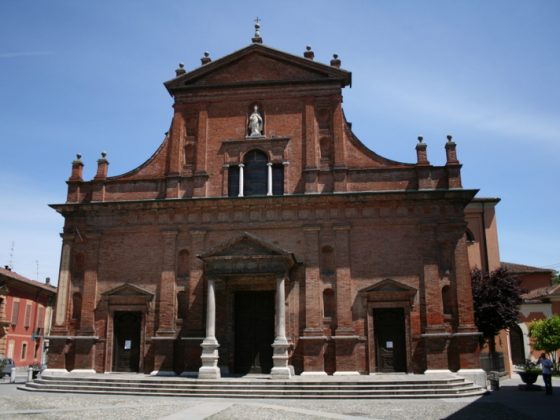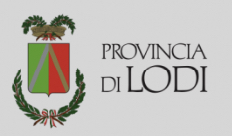19. Collegiate of Saint Biagio
19. Collegiate of Saint Biagio
- Address: Piazza XX Settembre Codogno
A chapel devoted to Saint Biagio is first documented in 1205. No trace is left of this pristine building. In 1491 the church was completely rebuilt with a Renaissance taste and in 1524 the refurbishment on the inside introduced more classic lines. The brickwork façade was built in 1584 by the Cremona architect Giovanni Battista Regonino and features two rows with triangular gable; it is deeply marked by the profiles and the double brickwork pilaster with decorative niches. In the upper portion a serliana arch opens, surmounted by a niche housing a statue of Saint Biagio. The column porch and high plinths date back to 1585.
The inside of the church has a Latin plan, with three naves and side chapels. Prince Trivulzio family contributed the greatest impulse to the church; since 1491 they had wanted to erect a chapel devoted to the Madonna dell’Assunta. After 1524 documents attest the works taking place on the inside to open noble family chapels along the sides. The years around 1530 seem to be crucial both for the architectural definition of the church and its pictorial legacy.
It is probably thanks to the cardinal Teodoro Trivulzio that a masterpiece by Daniele Crespi, “Virgin with the baby Jesus and the angles between Saint Frances and Saint Carlo Borromeo” arrived in Codogno; the painting has an incredible formal elegance, which accomplishes the highest quality.

A chapel devoted to Saint Biagio is first documented in 1205. No trace is left of this pristine building. In 1491 the church was completely rebuilt with a Renaissance taste and in 1524 the refurbishment on the inside introduced more classic lines. The brickwork façade was built in 1584 by the Cremona architect Giovanni Battista Regonino and features two rows with triangular gable; it is deeply marked by the profiles and the double brickwork pilaster with decorative niches. In the upper portion a serliana arch opens, surmounted by a niche housing a statue of Saint Biagio. The column porch and high plinths date back to 1585.
The inside of the church has a Latin plan, with three naves and side chapels. Prince Trivulzio family contributed the greatest impulse to the church; since 1491 they had wanted to erect a chapel devoted to the Madonna dell’Assunta. After 1524 documents attest the works taking place on the inside to open noble family chapels along the sides. The years around 1530 seem to be crucial both for the architectural definition of the church and its pictorial legacy.
It is probably thanks to the cardinal Teodoro Trivulzio that a masterpiece by Daniele Crespi, “Virgin with the baby Jesus and the angles between Saint Frances and Saint Carlo Borromeo” arrived in Codogno; the painting has an incredible formal elegance, which accomplishes the highest quality.


